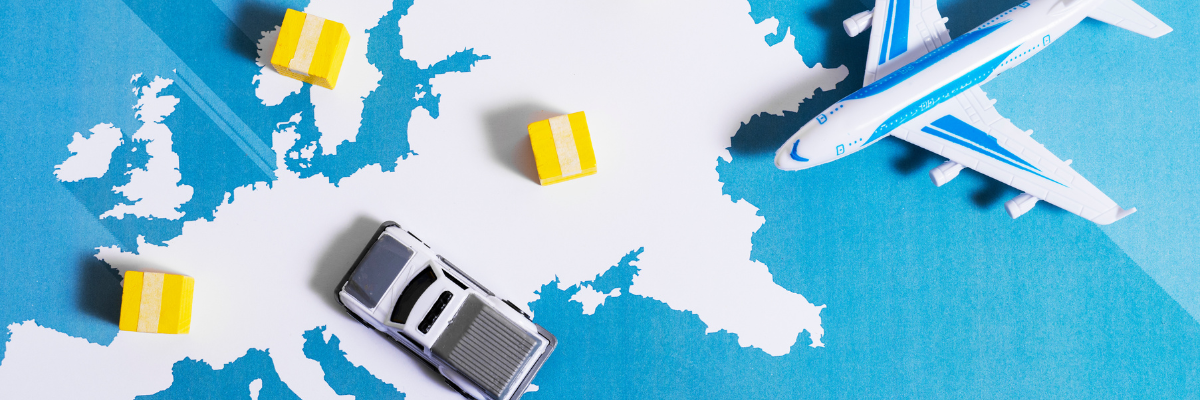In 2025, the world of cross-border e-commerce will undergo a significant transformation due to the introduction of new duties and customs regulations by the European Union. These changes will have a direct impact on digital merchants, logistics operators, and e-commerce managers handling international shipments, especially when it comes to indirect exports outside the EU.
Preparing in advance is the only winning strategy to avoid being caught off guard by tighter controls, delays, or holds that could compromise end-customer satisfaction. In this scenario, it becomes essential to rely on the right partners and tools, like those offered by Hubrise, which, through innovative services such as SEND2U, support operators in every stage of the logistics and customs process.

What will change in 2025 for cross border e-commerce?
Starting in 2025, under the new European reform, new customs duties will come into effect, including charges for low-value goods, with a minimum threshold set at €2. This change will particularly affect cross-border e-commerce operators handling shipments from Europe to non-EU countries, or vice versa. In the past, low-value shipments were often exempt from duties, favoring the import of inexpensive products from third countries, often with minimal customs checks. Now, with the aim of protecting internal competition and ensuring tax revenue, the EU has decided to tighten customs controls.
The difference will be tangible both for those importing goods into Europe and for those involved in indirect exports outside the EU. For the latter, it will be essential to update documentation procedures, properly manage customs declarations, and adopt tracking systems capable of communicating in real time with couriers and customs authorities.
The differences between direct and indirect export
Understanding the difference between direct export and indirect export outside the EU is essential to avoid mistakes in fiscal and documentation management. A direct export occurs when the seller ships the goods outside the European Union directly and handles all customs procedures. An indirect export, on the other hand, takes place when the seller delivers the goods to a logistics operator or another party, who then takes care of the final shipment to the non-EU destination country. Operationally, this results in differences in how proof of exit from the EU customs territory is managed, and consequently, in the correct application of VAT on exports outside the EU.
E-commerce VAT: how to manage VAT on exports outside the EU
One of the most critical aspects concerns the management of VAT on exports outside the EU. Sales to third countries are not subject to VAT, provided that the actual transfer of goods outside the EU territory can be proven. In the case of direct export, proof is relatively easy to provide through international transport documents. With indirect exports outside the EU, however, the seller must ensure that they promptly receive proof of goods exit from their logistics partner to avoid potential disputes with the tax authorities.
Even minor mistakes in managing customs forms, registration timing, or document storage can turn into serious issues for the company. That’s why it’s essential to adopt integrated digital systems capable of automating these steps, minimizing human error, and ensuring complete traceability for every shipment.

Digital customs solutions and specialized logistics partners
To successfully navigate the challenges of the new European regulatory landscape, e-commerce managers and logistics operators must rely on advanced customs solutions and specialized partners. Manual management of customs documents is no longer sustainable, either in terms of time or fiscal risk.
With its SEND2U service, Hubrise offers a smart platform for managing cross-border shipments: it allows real-time order tracking, automated customs documentation management, and integration with international courier systems. Thanks to solutions like this, businesses can confidently face the introduction of the new €2 EU duty, ensuring fast shipping, regulatory compliance, and end-customer satisfaction.
How to optimize cross border e-commerce and prevent delays
Cross-border e-commerce represents an outstanding growth opportunity for businesses, but to continue reaping its benefits, internal processes must be adapted to the new regulations. Working with experienced logistics partners, automating VAT management for non-EU exports, digitizing customs workflows, and integrating IT systems with those of major carriers are now essential steps.
Hubrise supports e-commerce operators through this evolution with scalable and flexible solutions. SEND2U, for example, is not just a shipping service, but a true strategic partner for intelligently managing the entire order lifecycle, from fulfillment to final delivery, including customs procedures and document tracking.
Preparing today means avoiding tomorrow’s disruptions, delays, and additional costs. Those who invest now in advanced digital tools will be ready to ride the wave of change in 2025, turning the new customs regulations from an obstacle into a competitive advantage to stand out in the global market.